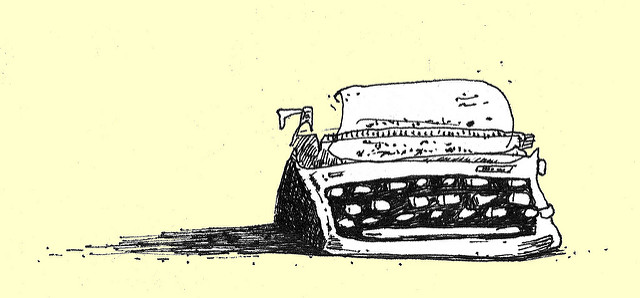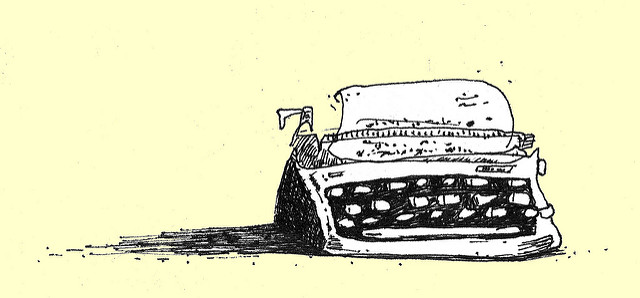by Mikhaeyla Kopievsky
Recently, I was feeling all kinds of nostalgic about nearing the finish line for Divided Elements | Resistance, and decided it was a good time to reflect on all the big lessons I have learned as a first time author. Last week I talked about the very sage advice of setting up your author platform (seriously, if you haven’t already done this step, add “start wordpress blog” and “set up at least one social media account” to your list of things to do). This week, I want to talk about the lessons I learned (and some I should have avoided) and the things I figured out for myself in writing a first draft.

Lesson 1: Gnothi seauton. (Or, for the non-ancient Greeks, “know thyself”)
This is a lesson I had to figure out for myself and one I’m still trying to fully figure out. Every writer is different – in what we write, in how we write, in why we write. Inspiration for story ideas will come to each of us differently. There are those of us that start with a character (e.g. I want to write a story about your average suburban girl who has found street cred and a way to brush off her legacy of schoolyard geekery via zombie hunting), those that start with a genre (e.g. I want to write a supernatural dark comedy), others that start with a theme (e.g. I want to write a story about love overcoming prejudice), those that start with a setting (e.g. I want to set my story in post-apocalyptic Australian suburbia), and those that start with a premise (e.g. I want to write a story about a zombie hunter whose mum has just started dating a zombie).
Each of these starting points represents a key aspect of the story you are about to write. Regardless of whether you are a plotter (someone who structures their story before they write it) or a pantser (someone who writes by the seat of their pants without a roadmap), figuring out each of these is important for determining your story’s trajectory. Knowing your character is a starting point. Knowing your character, and the setting, theme, and tone (indicated by genre) of their core conflict (indicated by premise) – that’s trajectory.
Figure out yourself, figure out the gaps, and figure out the story trajectory. A story about a surburban zombie hunter in a paranormal mystery is a very different story to a one about the same hunter in a coming of age story or a dark comedy.
Lesson 2: Don’t write shitty first drafts
The old adage ‘write shitty first drafts’ abounds in writer circles. I agree with its underlying sentiment – “just write!” – but don’t agree with its call to action.
For me, ‘write shitty first drafts’ belongs in the same proverb bag as ‘he who hesitates is lost’. But, for every pithy idiom is another to contradict it –
“Look before you leap!”
“Haste makes waste!”
“Measure twice, cut once!”
“A stitch in time saves nine!”
I am not one of those writers who can vomit out words and then spend an inordinate amount of time going back and editing that word vomit into shape. I prefer to get my stories mostly right and then undertake strategic edits to fix problems that are the exception and not the rule.
Having your story trajectory sorted will help with not writing word vomit – so will these other awesome tips:
- Read and watch and listen to good stories. When I get stuck or feel that the quality of writing (or dialogue, or setting description, or exposition) is sub-par, I read a few pages of a writer I admire or a book that I see as a benchmark. It serves as inspiration, motivation and a quick ‘how-to’ guide.
- Understand story structure. Regardless of whether you are a plotter or pantser, you need to recognise that the human brain is pretty much hard-wired to absorb a story in a very specific way. It seeks out certain patterns and conventions. It’s why romance readers demand their happily ever after, why thriller readers demand their moment of ascendancy for the antagonist, why mystery readers demand their subtle clues and red herrings.
- Know your end-point and where you want to go. This one is a little trickier (as I note in the next lesson)
Lesson 3 – Don’t go in blind. But, don’t plan too far in advance.
Okay, hard-core pantsers, you may look away at this point – this is one for the plotter-leaning amongst us (like most things, I think it is more accurate to think in terms of a Kinsey-like scale of plotting/pantsing, rather than strict binaries).
I love story structure. I spend each new novel planning stage extrapolating an outline from the bare premise I start with. I think you need a game plan before you run out on to the field. That said, I don’t think you can anticipate everything in advance. If your story writing process is anything like mine, your characters will have a way with assuming control of your story and shifting it along unexpected tangents, or your research will uncover some new and exciting aspect to the story that seems to shift its tone or direction.
You need to have a plan, but you also need to be flexible and open to new directions.
My approach goes like this:
- Figure out my story trajectory and use that to frame the broad parameters for writing. Everything should be consistent with the trajectory, and the trajectory should be wide enough to allow for some deviations within the lines.
- Outline (and write) in stages. Typically, I outline (and then write) each gap between the five key turning points. This gives me some structure to write to (which makes for much more productive writing sessions), while also allowing for new tangents, developments and ideas to be picked up in the next part of the story. Outlining in stages also helps me to keep fresh the key points I need to be hitting in each part of the story.
Well, that was cathartic! Hope you found it helpful 🙂
Image courtesy of DangerPup via Flickr Creative Commons


Agreed! A first draft doesn’t have to be perfect or polished, but it should still be *good*. I think of a first draft like choosing your materials for a build. You can rework the design a billion times afterwards, but if you’ve started with bad materials, it will never be a beautiful house.
LikeLike
Really great points! This is how I’m leaning too. And the ‘don’t write a shitty first draft’ is key. It is SO worth it to make the chapter decent while you’re writing it. Editing a decent draft is fun. Editing a shitty draft is life-sucking. 🙂
LikeLiked by 1 person